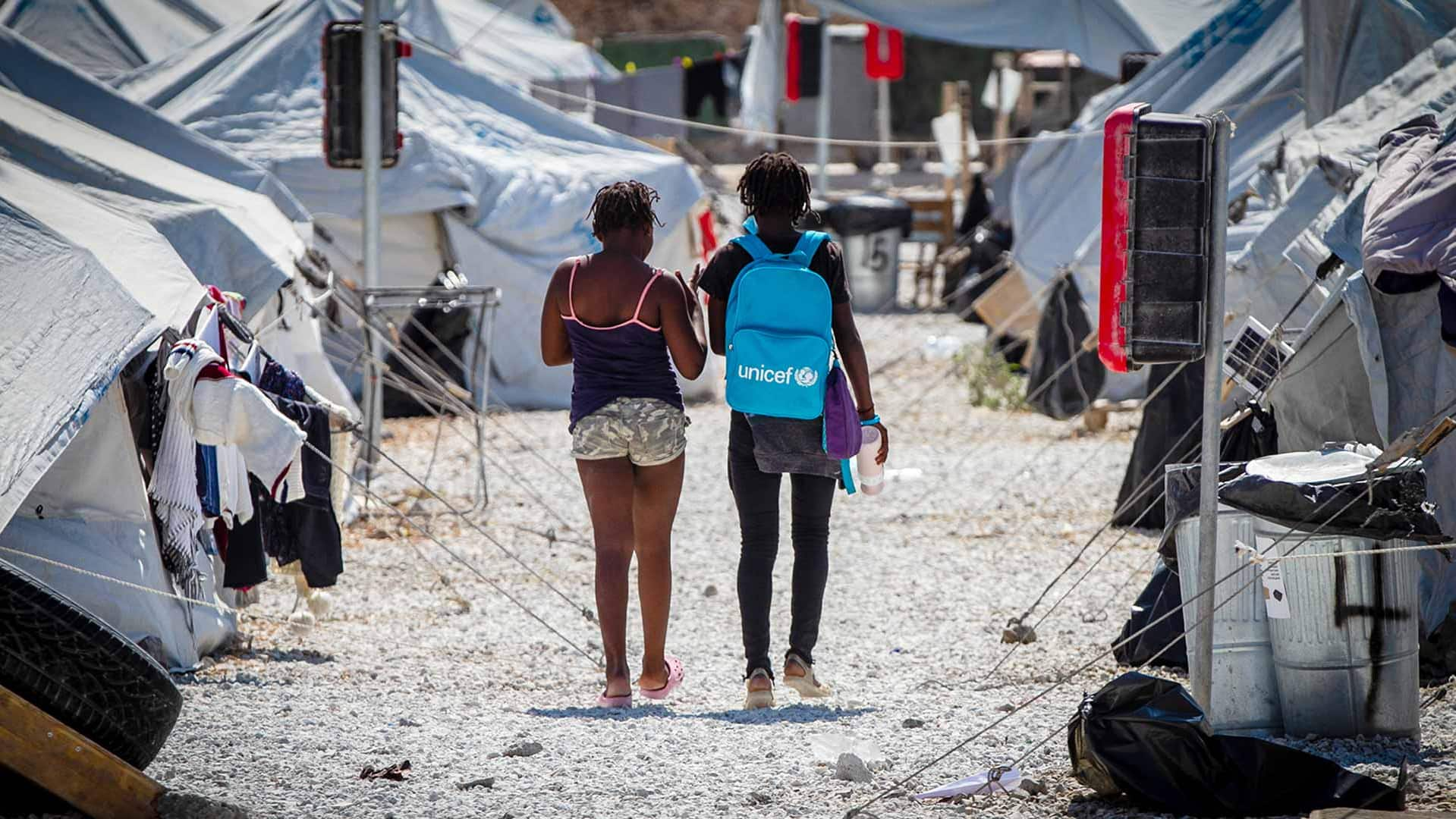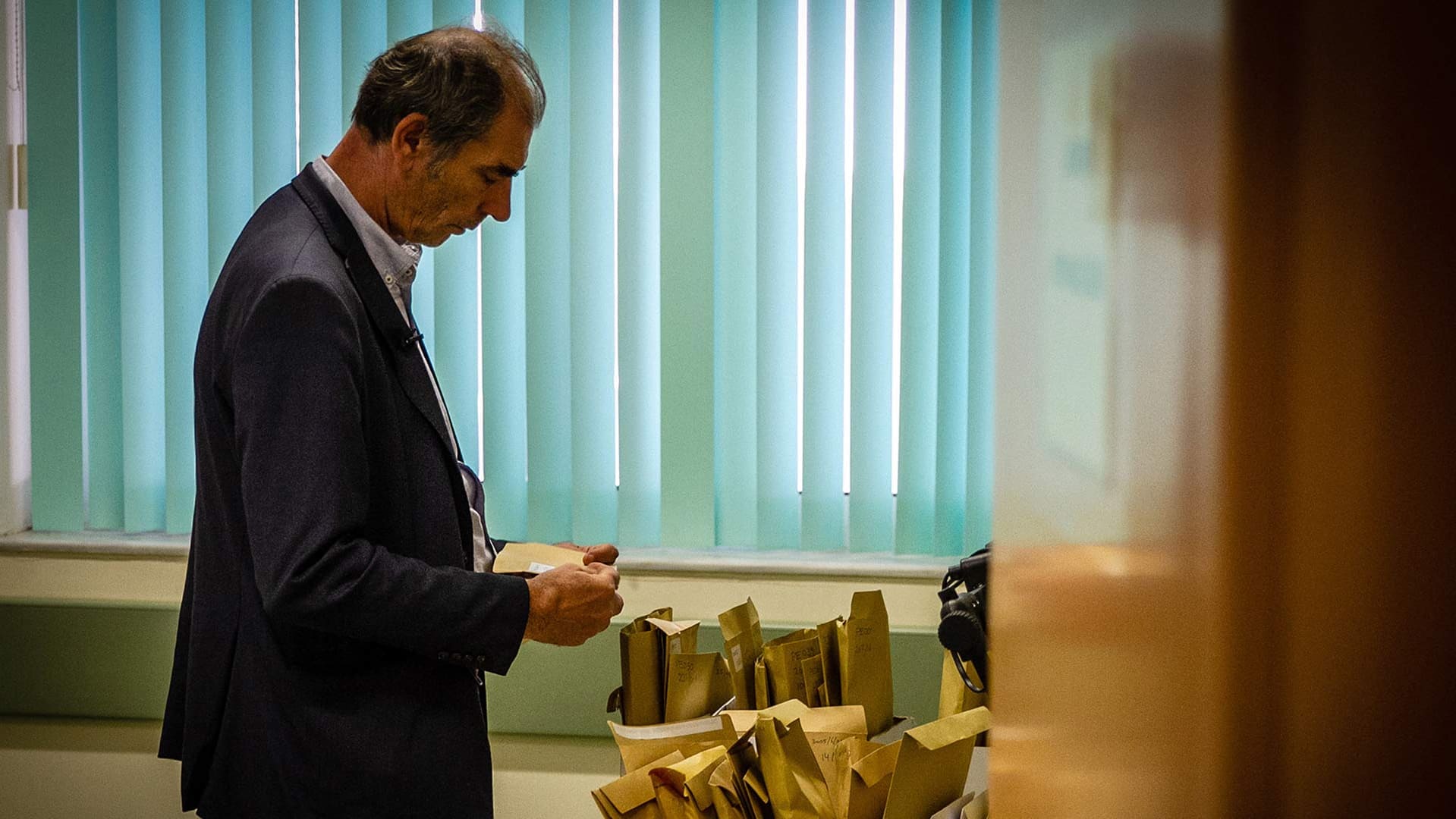
Located in a valley on the Greek island of Samos, a few kilometres from the town of Vathy, sits a facility that the European Union has touted as a model for future refugee camps.
Opened in September 2021, it is the first Closed Controlled Access Center (CCAC) for asylum seekers. Funded by the EU at a cost of 43 million euros, the camp is surrounded by multiple barbed-wire fences and equipped with a security system that includes CCTV cameras, magnetic gates and X-ray technology. Entry and exit are controlled and a curfew is imposed at night.
Anitta Hipper, the EU Commission spokesperson for Home Affairs, maintains this type of facility “represents a significant improvement of reception conditions for asylum applicants.” Hipper also emphasized the Samos facility is not a “closed” centre, because of the entry and exit system in place.
NGOs and asylum seekers themselves, however, aren’t convinced — they believe this sort of camp weakens the mental health of already weakened people.
“When you first see it, it looks a bit like a prison,” said Sae Bosco, the communications and advocacy co-ordinator at Samos Volunteers, a local NGO.
Based on the testimony of camp residents, Bosco said, life there is very restrictive. “They feel like they did something wrong, but haven’t. It’s difficult for them to have a normal life … it’s really negative on people’s mental health.”
WATCH | Greece’s new refugee camp compared to prison:
Greece is facing criticism for plans to place migrants into ‘closed, controlled’ camps, which some describe as prisons but the government says will provide better living conditions. It comes as the country is concerned about a potential influx of Afghan refugees.
The camp was built in response to the massive influx of migrants and refugees into Europe — and especially Greece — since 2015.
Samos is one of the Aegean islands where migrants and refugees, travelling through nearby Turkey, arrive. At the moment, it’s the third point of entry into Greece, with more than 1,600 migrants and refugees recorded in Samos since the beginning of this year.
These numbers are on the rise, compared to last year. According to the United Nations High Commissioner for Refugees (UNHCR), Greece has recorded more than 13,500 arrivals so far this year, including around 9,000 by sea.
The majority of them have been from Afghanistan, Somalia, Syria or the Palestinian territories, and have experienced traumatic situations.
Ella Dodd, a legal co-ordinator at I Have Rights, another NGO in Samos, works daily with asylum seekers. She says they fear the officers policing the camp, who have a reputation for forcing migrants back across borders.
“People are terrified about speaking out about the police violence … because they are [under] constant control by the police. You have people who have been pushed back many times before, and they are aware of who did these pushbacks.”
The long road
In the last few years, many NGOs and activists have denounced pushbacks, which refer to the forcible return of people across an international border without any assessment of their rights to apply for asylum. It’s a violation of both international and EU law.
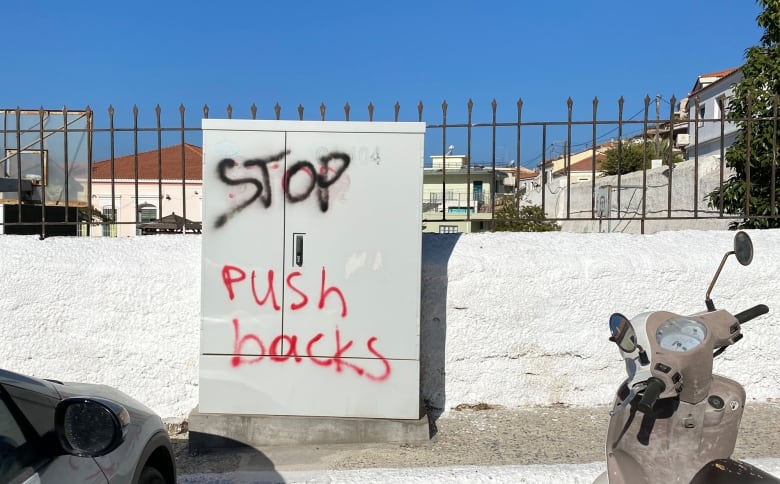
A report from OLAF, the EU’s anti-fraud watchdog, recently leaked in the media, concluded that senior staff at EU border agency Frontex were involved in covering up the illegal pushbacks of migrants from Greece to Turkey. The report called it a violation of “fundamental rights.”
While Frontex acknowledged a number of shortcomings, it said “these were practices of the past.”
On Samos, a refugee camp was initially established in Vathy, the island’s capital. It is estimated around 7,000 people lived there, in a space built for a capacity of about 700. With difficult access to toilets, drinking water and electricity, not to mention an infestation of rats and snakes, this camp used to be called “the Jungle.”
While NGOs agree that sanitary conditions have improved with the new CCAC camp, most of these workers have refused to work inside the facility, in protest.
One of the reasons is the location of the closed camp makes travel more difficult for asylum seekers. If they want to go to Vathy, for example, they need to take the bus or walk. People cannot afford it, claim local NGOs.
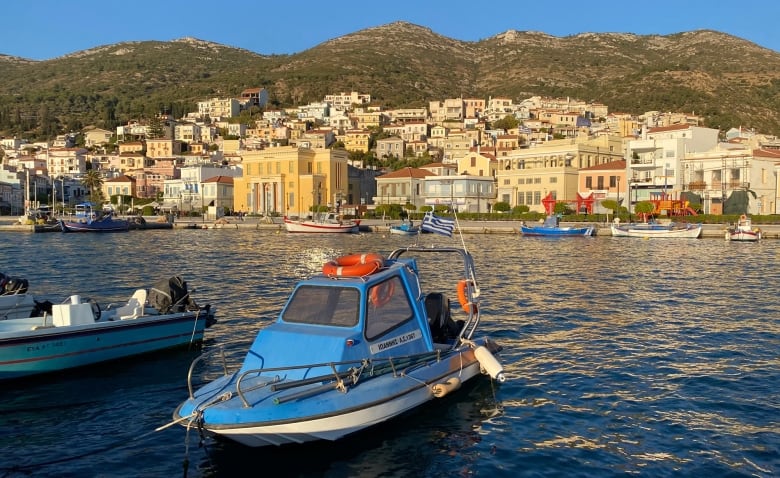
The price of a bus ticket is 1.60 euros one way or 3.20 euros round trip. The Greek Ministry of Migration and Asylum provides some cash assistance — for example, 75 euros a month for one individual who lives in the closed camp.
“It’s impossible for them to take the bus every day, and it’s more difficult for them to escape the situation, like people used to do before, in the old camp,” said Bosco.
Dodd said a faster asylum-assessment procedure has led to more stress among migrants.
“With the old camp, we used to have people waiting for a year before having an interview date [with authorities]. Now, it will be a matter of weeks or months after their arrival — and then the decision comes out very quickly.”
That’s not necessarily good news, she says. “Authorities don’t do a good job and properly investigate people’s claims.”
A newcomer entering the closed camp needs to quarantine for a few days, due to COVID-19. After that, they can be detained for up to 25 days for identification purposes, says Dodd. During this time, asylum seekers are unable to leave the camp at all — even, for example, to receive legal advice from her NGO.
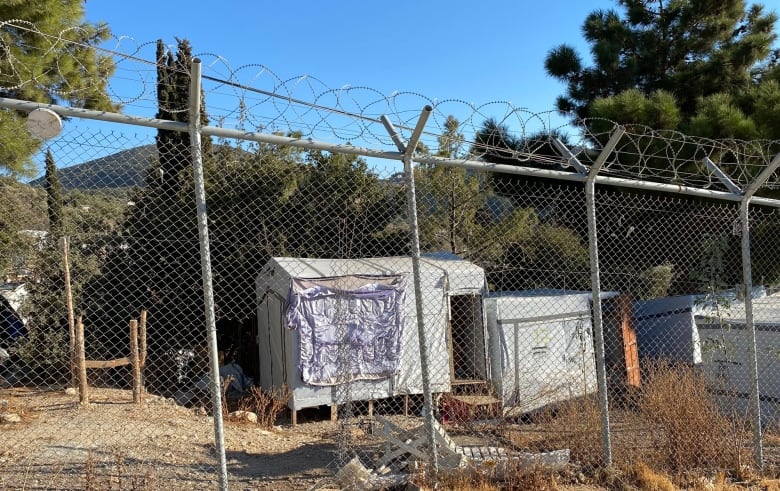
Sometimes, the crucial asylum interview falls in this time frame, says Dodd, which means they miss an opportunity to consult with an NGO.
In a statement, UNHCR said: “Asylum seekers need protection, they are not criminals or a risk to the community. They are people who need help.” It also warned “that additional security measures have the potential to retraumatize and provoke psychological distress among refugees and asylum seekers.”
Ongoing crisis
The Greek Ministry of Migration and Asylum would not allow CBC inside the Samos camp, citing an “excessive workload.” In a statement, Greek authorities said the living conditions are far from harsh in these kinds of facilities, saying they create “a sense of security for the residents of the islands and between the migrants.”
Mabinty Karbo, 20, is one of them. Earlier this year, she fled Sierra Leone, alone, leaving everything behind — including a four-year-old child.
After arriving in Turkey, Karbo boarded a small boat in June, with 46 other migrants, to reach Greece. They left Turkey at night and saw the Greek coast of Samos in the early morning. But they were pushed back by what could be police boats for two days, Karbo recalled, with emotion in her voice.
After finally reaching the island, Karbo and the other migrants hid in the mountains for fear of being sent back to Turkey. Some on the journey died, she said.
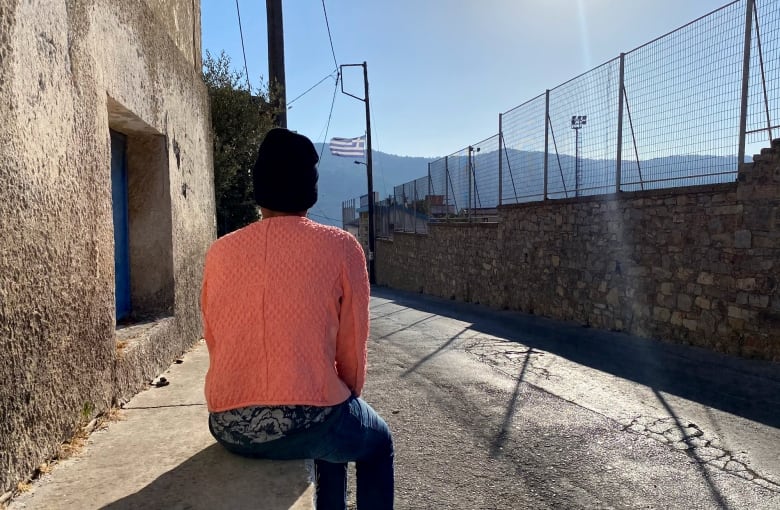
“I was scared, I was vomiting, I was hopeless,” said Karbo. “I wasn’t able to do anything for myself. But life has been good — I’m alive!”
When CBC met her on Nov. 1, Karbo had just received a positive response to her asylum application and left the controlled camp the day before.
The isolation was hard, she said; there wasn’t enough food and the location was challenging.
“How can you expect refugees to have money to take the bus and go to the town?” she wondered. “It was not easy inside — but we were managing.”
While she hopes to start a new life in Athens, Karbo’s mind is still somewhere else.
“I don’t know if she’s still alive,” she said, referring to her daughter, who remained with friends of her late husband. The lack of recent news had Karbo worried. She hoped to one day bring her daughter to Greece.
Double standards?
That the EU welcomed so many Ukrainian refugees in the wake of the Russian invasion has led many observers to suggest the EU has double standards when it comes to refugees.
Since the invasion in February, European countries have largely followed an open-door policy toward Ukrainian asylum seekers. They have been placed under international protection in Europe and officially become refugees.
For the first time since 2001, the EU has also used the Temporary Protection Directive, allowing Ukrainians to obtain a residence permit in EU countries and benefit from education and health services, and to work, according to the European Commission.
The UNHCR estimates that more than 7.7 million Ukrainians have taken refuge in Europe since the start of the invasion.
“Asylum seekers on Samos are very aware that they are in a detention centre and have to go to interviews, while Ukrainians can fill in online forms,” said Ella Dodd. “The racism of Europe is so clear.”
WATCH | Authorities identify the migrants who died trying to get to Greece:
As Greece takes a harder stance on refugees, hundreds have died trying to reach the country. A coroner has been trying to identify those who didn’t survive the journey, as other people try to fortify the border to keep migrants out.
According to local NGOs, the war in Ukraine has shifted the attention from one migration situation to another, even though the situation in Greece is not yet resolved. Migrants and refugees in Samos regularly ask NGO workers about the difference in treatment.
“There are no refugees from Ukraine in the [CCAC] camp. It’s wrong to have a containment camp in the middle of nowhere with just people of colour. It’s such a racist policy,” said Bosco. “It’s a continued colonial mindset in all of Europe.”
Concerns about new CCACs
Since the opening of the first CCAC camp in Samos, two similar facilities have opened on the Greek islands of Legos and Kos. Two additional centres are also under construction on the islands of Lesvos and Chios, expected to open next year.
NGOs in Samos that have witnessed the impact of the first CCAC are calling on EU and Greek authorities to revise their approach.
“I really think Samos is kind of a big trial.… It’s really scary, because people in this camp become invisible, because you put people in the middle of nowhere,” said Bosco. “This makes the problem invisible.”
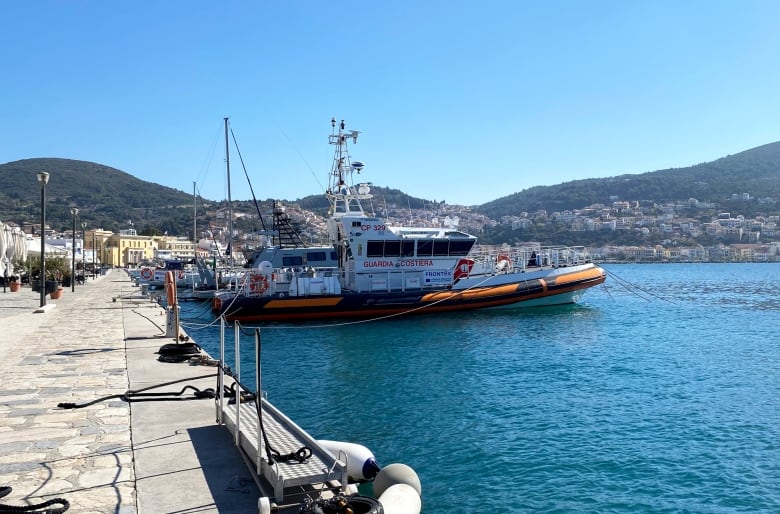
Dodd shares the concern. “It’s a monster, this camp. It is a detention centre. The amount of money spent to build it and maintain it is so obscene.”
The NGOs and others are calling on EU nations to take more responsibility and find a more humane approach to the migrant situation, by promoting greater integration in the community — housing refugees in empty houses in the city, for example.
Said Bosco: “I hope that at some point in the future, we will look back on Samos and we will be like, ‘What the hell were we thinking of, putting people in these isolated facilities?'”
